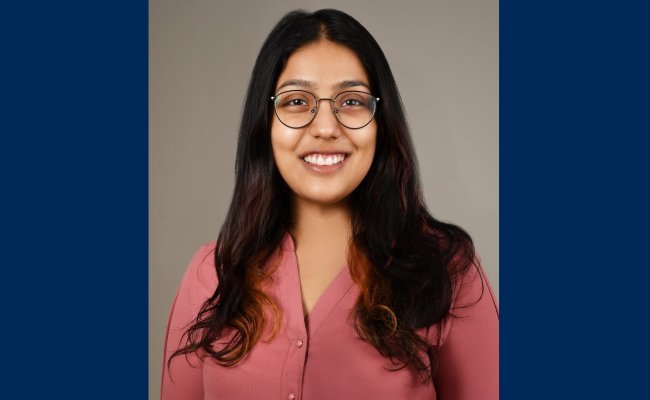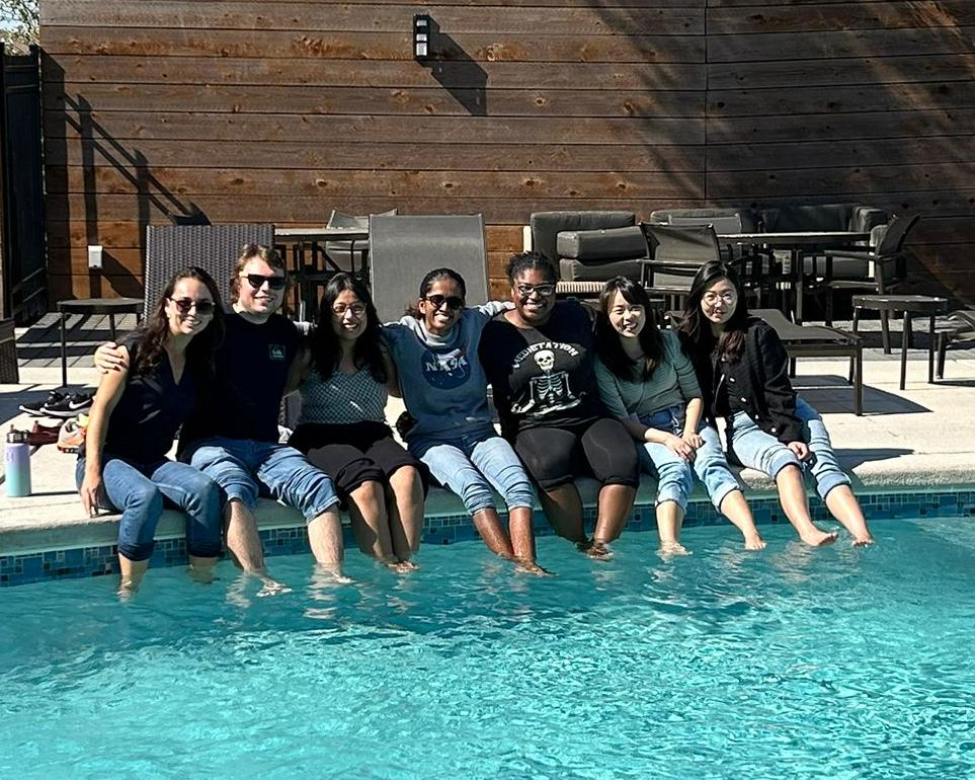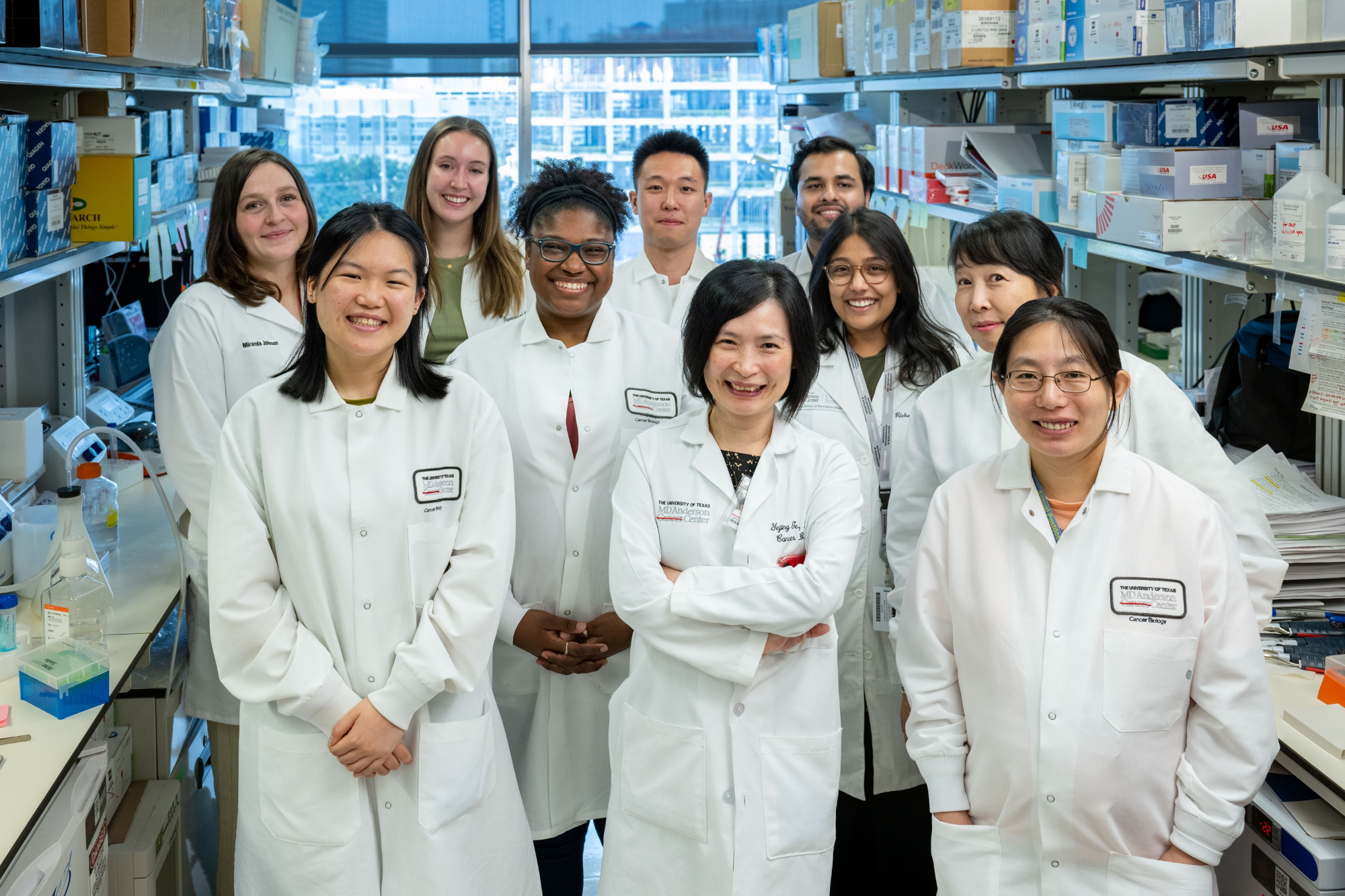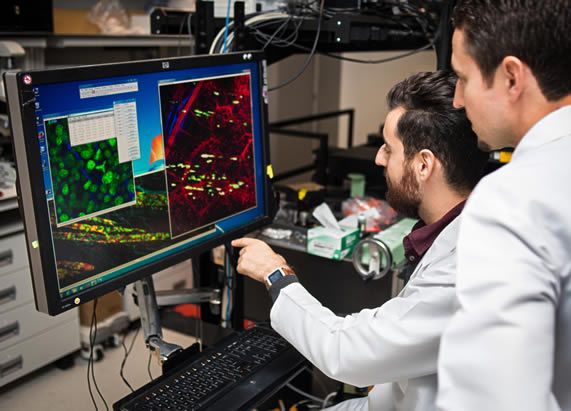Kopchick Fellow Richa Nayak investigates the role of “jumping genes” in stem cells and human disease
October 03, 2025 By: Shelli Manning, MLA/The University of Texas MD Anderson Cancer Center UTHealth Graduate School of Biomedical Sciences


When you think of the human genome, you might imagine an intricate code uniquely our own. But as PhD candidate in the Genetics and Epigenetics program Richa Nayak explains, nearly half of it is made up of remnants of ancient viral sequences called transposons — also known as “jumping genes” or “genomic parasites.”
“Over the course of evolution, these elements have been repurposed for host functions but are typically silenced in adult tissues,” Nayak said. “When they reactivate, they’ve been increasingly linked to diseases like cancer, neurodegeneration, and autoimmune disorders.”
Her research, supported by the Charlene Kopchick Fellowship she received earlier this year, focuses on how adult stem cells regulate these elements — and what happens when that regulation fails.
“By understanding how transposons are controlled in stem cells, we can better understand their dual role in health and disease, potentially finding new targets for therapeutic interventions in neurodegeneration, cancer, and other diseases.”
Where science and curiosity aligned
Nayak’s path to this project was not a straight line. Initially drawn to the big question of how cells know what to do — how the same genetic makeup can produce such diverse cell types and responses — she knew that understanding this complex process requires an interdisciplinary approach. Her graduate training began with efforts to establish an in vivo functional genomics platform that offers single-cell resolution for studying lung development.
When her first mentor moved institutions, Nayak had to pivot. “I wasn’t sure what direction to take next,” she recalled. That’s when she found the lab of Yejing Ge, PhD, where the focus on skin as a model for adult stem cell dynamics and on transposon regulation clicked.
“It felt like the perfect intersection of my interests, where I could focus on these often-ignored parts of the genome that hold important regulatory roles in cells and have disease relevance.”

(Nayak with her lab mates in the lab of her mentor, Yejing Ge, PhD.)
More than credentials: A graduate school that values the whole student
For Nayak, the decision to join The University of Texas MD Anderson Cancer Center UTHealth Graduate School of Biomedical Sciences (GSBS) came during a difficult time: the height of the COVID-19 pandemic.
“While many programs felt like they were checking boxes, GSBS seemed genuinely interested in me as an individual — my interests and aspirations. That sense of being seen and valued has carried through my entire training here.”
What also drew Nayak was the structure of the program itself, with the flexibility to be affiliated with multiple programs and the extremely collaborative environment that the Texas Medical Center offers.
From discovery to application: exploring the future of epigenetics
As she nears the end of her program, Nayak is already envisioning her next steps. After graduation, she plans to pursue a postdoctoral position in industry, likely in the field of epigenetics. Her passion lies in fundamental biological questions — particularly how the epigenetic regulation of transposable elements influences human disease.
“The therapeutic potential of transposable elements is largely underexplored, and I’d like to push myself to work at the interface of discovery and application.”
Nayak also sees her career stretching far beyond the bench. Inspired by a perspective article on the future of bioscience (Navigating your US bioscience career into the 2030s) by Baylor College of Medicine scientist, pediatrician, and public health advocate Peter Hotez, MD, PhD, she hopes to contribute at the intersection of research and policy.
“According to Hotez, the future of biological sciences requires more collaboration between academia and industry. I want to help shape environments where cross-sector innovation is easier, training is more flexible, and scientific innovation is accessible to everyone.”
Advice for the next generation
Despite her achievements, Nayak is quick to say she doesn’t feel like she has all the answers.
“I feel like I have no business giving advice. There are days when I still feel like I don’t belong here. I am figuring it out in real time, but here’s what I have learned so far.”
For Nayak, success in graduate school has hinged on building community and staying grounded.
“Find your support system. They are the ones who will keep you going when experiments don’t. Participate in graduate school events, and you’ll meet people who remind you that you are not alone in this. Ask friends to read your first drafts or listen to your practice talks — it’s a great way to improve without the added pressure of formal feedback.”
She also stresses the importance of balance:
“Participate in graduate school events. Keep your hobbies alive, your science will thank you for it.”
Lastly, for Nayak, the heart of the PhD journey is, "showing up, staying curious, and willing to learn from your mistakes is enough. Be kind to yourself.”







